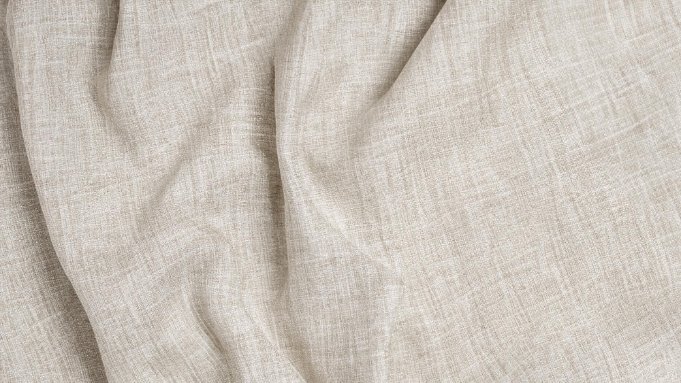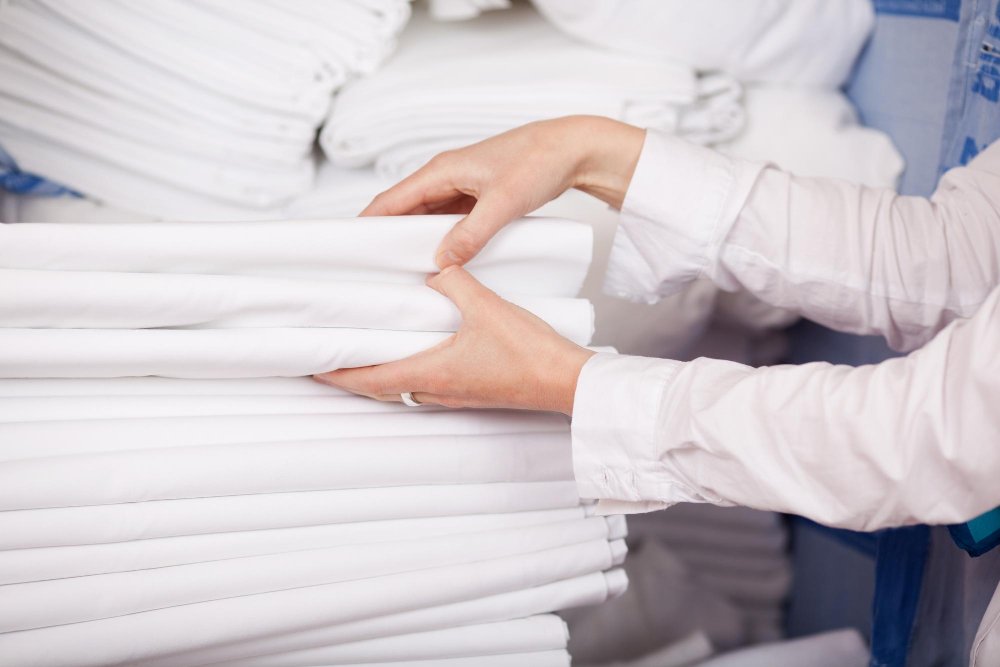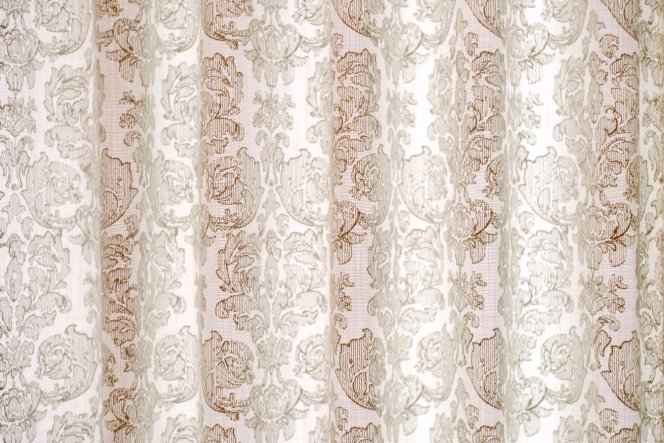Your complete guide to choosing, using, and caring for plain weave linen fabric
Table of Contents
What is Plain Weave Linen?
Plain weave linen is a natural fabric made from flax fibers woven in the simplest possible pattern. If you’ve ever looked closely at a woven basket, you’ve seen plain weave in action. The threads cross at right angles in a basic over-one-under-one pattern, creating that classic checkerboard look when you examine it up close.
@andreacheong_ The Ultimate Guide to Quality Linen: Price, Fabric, and Fashion
♬ original sound – Andrea Cheong
Quick Answer: What Makes Plain Weave Special?
Plain weave (also called tabby weave or linen weave) is where warp threads (vertical) and weft threads (horizontal) interlace in a simple alternating pattern. Each weft thread goes over one warp thread, then under the next, and so on. The next row does the opposite. This creates the strongest, most balanced weave structure possible.
This weaving method has been around for thousands of years. In fact, linen fabric dates back over 30,000 years, making it one of the oldest textiles known to humanity. Ancient Egyptians valued it so highly they used it in mummification and even as currency.
Is Plain Weave Good for Beginners?
Yes, plain weave linen is actually perfect if you’re new to sewing with natural fabrics. Here’s why:
- Easy to identify the grain: The simple over-under pattern makes it clear which direction is which
- Minimal fraying: The tight interlacing holds threads in place better than loose weaves
- Forgiving to work with: Small mistakes are less noticeable in the textured surface
- No special equipment needed: You can use standard needles and thread
If you’re just starting your sewing journey, check out our beginner’s guide to sewing for helpful tips on working with different fabrics.
Plain Weave Classifications and Variations
While the basic structure stays the same, plain weave comes in several variations:
- Balanced plain weave: Warp and weft threads are the same weight and spacing (this is what you’ll find in most linen fabric)
- Basket weave: Two or more threads woven together as one, creating a looser, more textured surface
- Rib weave: Uses thicker filling yarns to create a subtle ribbed texture
Is Linen a Fiber or a Weave?
This confuses a lot of people, so let’s clear it up: linen is both a fiber AND a fabric name. The fiber comes from the flax plant, but “linen” also refers to any fabric made from flax, regardless of how it’s woven. You can have linen in plain weave, damask weave, or twill weave. When people say “linen weave,” they’re usually talking about plain weave, since it’s the most common.
Why Linen is the Most Sustainable Fabric Choice in 2025
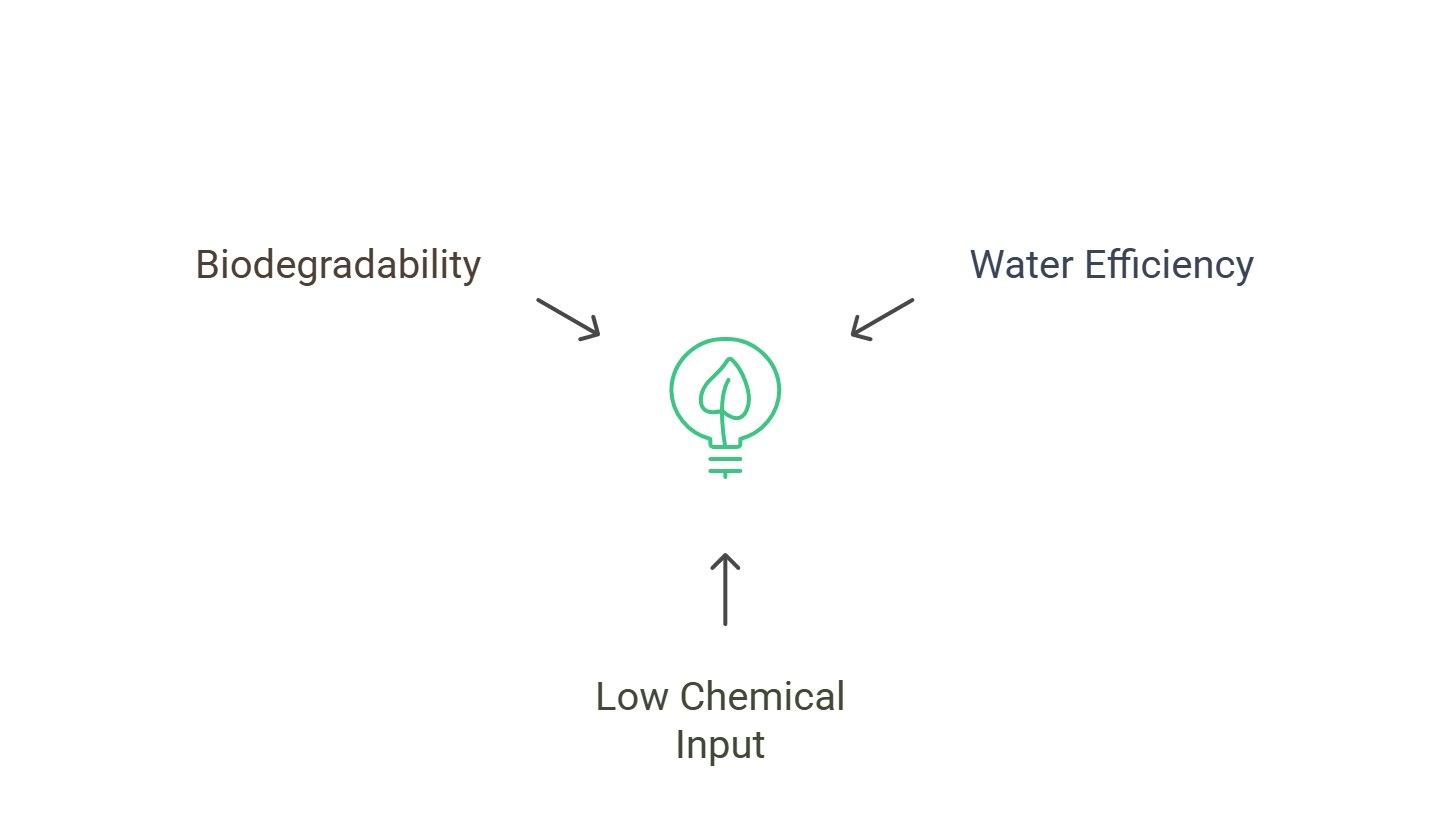
If you care about the environment (and who doesn’t these days?), linen should be at the top of your fabric list. Here’s why it’s earning its reputation as the most eco-friendly textile available.
Water Efficiency That Beats Everything Else
Flax plants are incredibly thirsty… or rather, they’re NOT. That’s the point. Flax requires significantly less water than cotton during cultivation, with most water coming from natural rainfall. This means you don’t need irrigation systems pumping groundwater.
Compare this to cotton, which guzzles water like there’s no tomorrow, and you start to see why linen is winning the sustainability game.
Low Chemical Input
Flax is a resilient plant that grows well in poor soil conditions. It doesn’t need the heavy pesticide and fertilizer treatments that cotton demands. This means:
- Less chemical runoff into waterways
- Healthier soil that actually gets enriched by flax cultivation
- Safer conditions for agricultural workers
- Lower environmental toxicity overall
Biodegradability and Circular Economy
When your linen item finally reaches the end of its long life (and we mean LONG), it breaks down naturally within years, not centuries like synthetic fabrics. Even better, it doesn’t shed microplastics when you wash it, unlike polyester which releases thousands of plastic particles into waterways with every wash cycle.
Look for These Certifications
When you’re shopping for linen, these certifications tell you you’re getting the real sustainable deal:
- Masters of Linen: European-certified with full supply chain traceability
- GOTS (Global Organic Textile Standard): For organic linen production
- OEKO-TEX: Ensures no harmful chemicals in the final fabric
- REEL Linen Code: New standard focusing on sustainable farming and processing practices
Composition and Weave: An In-Depth Look
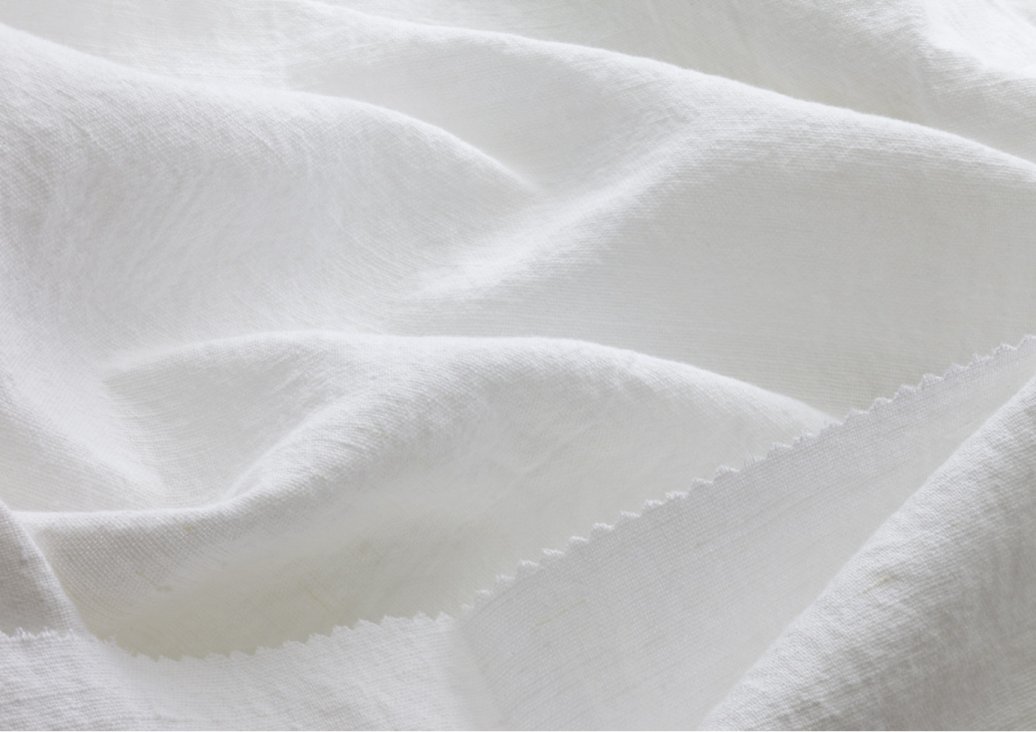
Material Composition and Thread Count
100% linen textiles showcase unmatched breathability thanks to their hollow fibers. When you touch linen, it feels cool because those hollow fibers allow air to circulate freely and heat to escape.
Many manufacturers also create linen-cotton blends to combine the best of both worlds. These blends typically contain 55-70% linen with the remainder being cotton. The cotton softens the texture while keeping most of linen’s breathability and strength.
How Plain Weave Compares to Other Weave Structures
Unlike satin’s glossy smooth surface or silk’s slippery finish, linen’s plain weave creates those characteristic natural slubs (slight bumps and texture variations) that add visual depth and character.
Those slubs aren’t flaws. They’re actually a sign of quality linen. They come from the natural variation in flax fibers and they’re what give linen its distinctive, lived-in look that gets better with age.
Weight and GSM Explained
GSM (grams per square meter) tells you how heavy the fabric is, which directly affects what you should use it for:
| GSM Range | Weight Category | Best Uses | Feel |
|---|---|---|---|
| 100-120 | Ultra-lightweight | Scarves, linings, sheer curtains | Delicate, semi-transparent |
| 120-150 | Lightweight | Summer dresses, shirts, lightweight curtains | Breezy, fluid drape |
| 150-180 | Medium weight | Pants, skirts, structured dresses | Good body, moderate drape |
| 180-220 | Medium-heavy | Jackets, heavy curtains, tablecloths | Structured, holds shape well |
| 220-300+ | Heavyweight | Upholstery, bags, canvas uses | Sturdy, minimal drape |
Need help calculating how much fabric you need? Try our fabric yardage calculator to avoid over-buying.
Linen vs Cotton vs Polyester: The Complete Comparison
Let’s settle this once and for all. Here’s how plain weave linen stacks up against the competition:
| Feature | Linen | Cotton | Polyester |
|---|---|---|---|
| Breathability | Excellent (highest) | Good | Poor |
| Moisture-wicking | Superior | Moderate | Minimal |
| Durability | Very high (gets stronger when wet) | Moderate | High |
| Wrinkle resistance | Low (wrinkles easily) | Low | High |
| Sustainability | Excellent | Moderate (organic: good) | Poor |
| Shrinkage | 3-7% on first wash | 3-5% | Minimal |
| Cost | High ($20-50/yard) | Moderate ($5-20/yard) | Low ($3-15/yard) |
| Best for | Summer wear, luxury items | Everyday comfort | Athletic wear, budget items |
| Microplastic shedding | None | None | Significant |
| Feel | Crisp, cool, textured | Soft, warm | Smooth, sometimes clingy |
Want to dig deeper into the cotton vs polyester debate? We’ve got a full breakdown for you.
When to Choose Each Fabric
Quick Decision Guide
- You need maximum breathability for hot weather
- Sustainability is a priority
- You want a luxury look and feel
- The item will be washed frequently (it gets softer)
- You don’t mind ironing or love the relaxed wrinkled look
- You want softness right from the start
- Budget is a concern
- You need versatility across seasons
- Kids or high-traffic items (more forgiving of stains)
- Wrinkle resistance is critical
- You need athletic performance features
- Working with a tight budget
- Items need to retain color intensity
Plain Weave Linen: Key Features and Performance
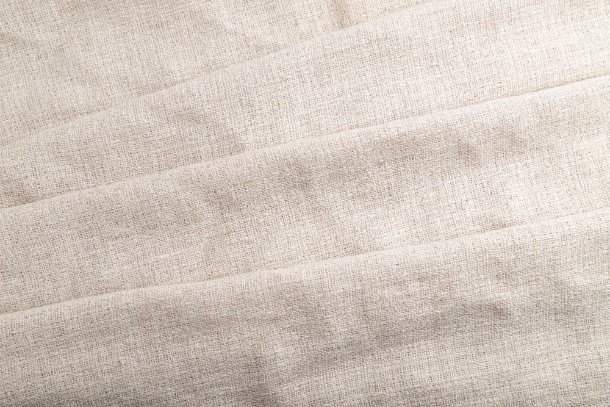
Is Plain Weave Breathable?
Absolutely. In fact, it’s THE most breathable common fabric out there. Laboratory tests show linen allows airflow rates 2.5 times higher than standard cotton blends. You’ll feel this difference immediately when you wear a linen shirt on a hot day compared to a cotton one.
What Does Plain Weave Feel Like?
Fresh out of the package, plain weave linen feels crisp, slightly stiff, and cool to the touch. It has a dry hand (meaning not slippery or silky) with a slight texture from those natural slubs we mentioned earlier.
But here’s where it gets interesting: after 3-5 washes, linen transforms. It becomes softer, more pliable, and develops this beautifully lived-in quality that just keeps getting better. Think of it like breaking in a pair of leather shoes, except you’re actually looking forward to the process.
Is Plain Weave Comfortable?
For most people, yes, very comfortable. The breathability keeps you cool, the moisture-wicking prevents that clammy feeling, and the natural fibers don’t trap odors the way synthetics do.
However, if you have very sensitive skin, brand-new unwashed linen might feel a bit scratchy. The solution? Wash it once or twice before wearing, and it’ll soften right up. Also, if you’re looking for fabrics specifically for sensitive skin, check out our guide to the softest fabrics for sensitive skin.
Year-Round Versatility
Most people think of linen as summer-only, but that’s selling it short. Here’s how it works across seasons:
- Spring/Summer: Obvious choice for lightweight breathability and moisture management
- Fall: Medium-weight linen makes great transitional pieces, especially when layered
- Winter: Heavyweight linen has surprising insulating properties. Those air pockets that keep you cool in summer actually trap warm air in winter when layered properly
The secret is choosing the right weight for the season. For more seasonal guidance, visit our summer fabrics guide.
How to Identify Quality Linen
Not all linen is created equal. Here’s how to spot the good stuff:
The Feel Test
Quality linen should feel cool to the touch immediately. Hold it up to your cheek. If it feels noticeably cooler than the room temperature, that’s a good sign. The fabric should also have some body to it, not limp or flimsy.
The Light Test
Hold the fabric up to a light source. You should see an even, consistent weave pattern. The spacing between threads should be uniform (though natural slubs are fine and expected).
Check the Origin
European linen, particularly from Belgium, France (especially Normandy), and the Netherlands, represents the gold standard. The region’s climate and centuries of expertise produce superior flax. Look for labels mentioning:
- Belgian linen
- French linen
- European Flax certification
- Irish linen (known for exceptional softness)
Examine the Selvedge
The selvedge (finished edge of the fabric) should be clean and even. Fraying or uneven edges can indicate lower quality or improper handling.
Look for Consistent Color
Quality linen dyeing penetrates evenly throughout the fiber. If you can, check the wrong side of the fabric. It should be nearly as vibrant as the right side, not significantly lighter.
- Extremely low price (real linen costs more to produce)
- Overly shiny or artificial-looking finish
- Chemical smell
- Limp, no structure to the fabric
- Vague origin (doesn’t specify where flax was grown)
Applications and Creative Uses
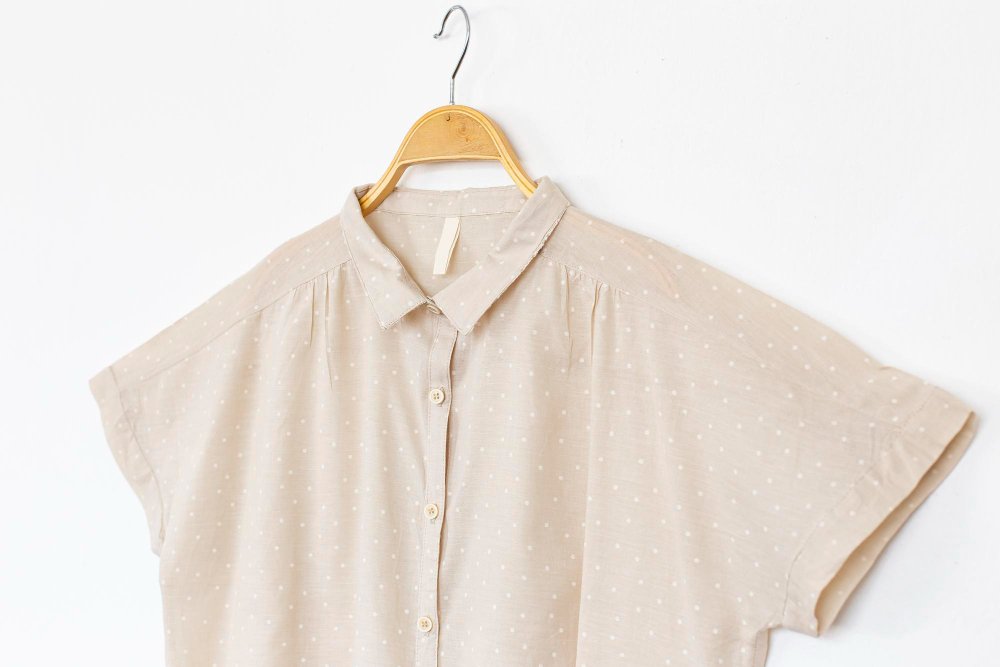
Fashion and Apparel
Plain weave linen shines in clothing applications:
- Dresses: Lightweight 120-150 GSM creates beautiful flowing silhouettes. Check out how to sew a dress if you want to make your own.
- Shirts and blouses: Medium-weight 150-180 GSM holds structure while staying breathable
- Pants and skirts: 160-200 GSM provides body without being too heavy
- Jackets: Heavier weights (200+ GSM) create structured outerwear perfect for spring and fall
- Scarves and accessories: Ultra-lightweight linen adds texture without bulk
Home Textiles and Decor
Linen transforms living spaces:
- Bed linens: Closely woven plain weave in 180-220 GSM makes luxurious, breathable sheets
- Curtains and drapes: 150-200 GSM filters light beautifully while maintaining privacy
- Tablecloths and napkins: 180-250 GSM handles spills and frequent washing
- Throw pillows and cushions: 200+ GSM stands up to daily use
- Upholstery: Heavy canvas-weight linen (300+ GSM) works for chairs and sofas in low-traffic areas
For Sewers and Crafters
Working with linen? Keep these tips in mind:
- Needle size: Use 14/90 or 16/100 universal needles
- Thread: Cotton or linen thread works best. Visit our thread selection guide for more details.
- Seam finishing: French seams or flat-felled seams work beautifully and prevent fraying
- Stitch length: Slightly longer stitches (2.5-3mm) work better than tiny stitches
- Pressing: Essential. Press seams as you go for professional results
Preserving Quality Through Proper Care
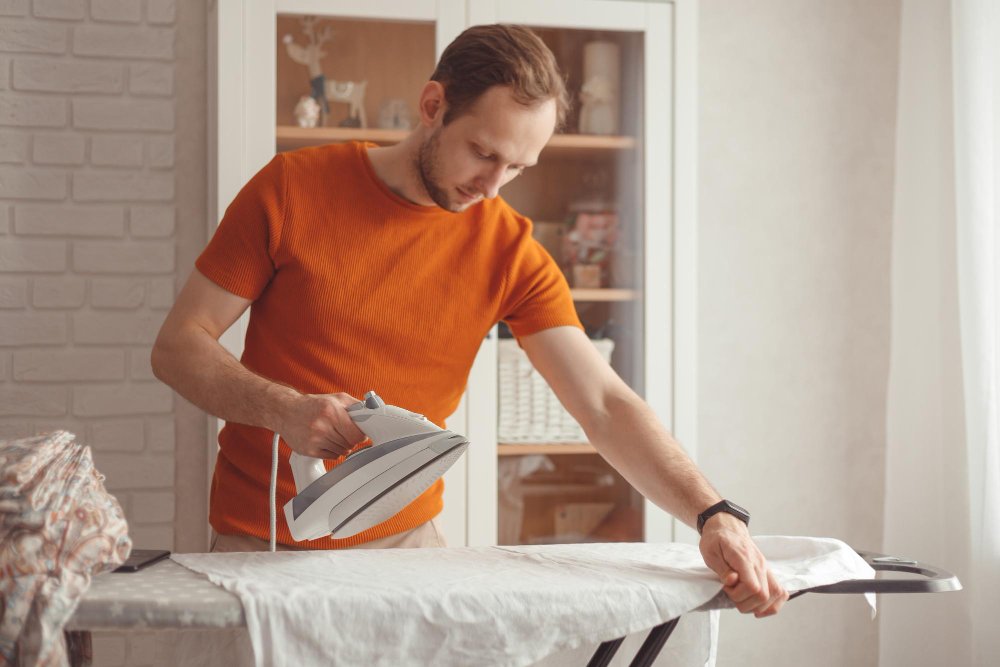
Does Plain Fabric Shrink When Washed?
Yes, linen typically shrinks 3-7% on the first wash. This is completely normal and expected. After that initial shrinkage, it stabilizes. Here’s what you need to know:
- Pre-wash all fabric: Before cutting and sewing, wash your linen to get the shrinkage out of the way
- Account for shrinkage: If buying ready-made items, check if they’re pre-washed or size up
- Length shrinks more than width: Expect more shrinkage along the length of the fabric grain
Washing Instructions
- Use cold to lukewarm water (30-40°C / 86-104°F)
- Choose pH-neutral, enzyme-free detergent
- Wash darks separately for the first few washes
- Use gentle cycle or hand wash
- Don’t overload the machine – linen needs room to move
For more detailed guidance, check our complete linen care guide and try our linen care calculator for personalized washing recommendations.
Drying Your Linen
Best method: Air dry flat or hang dry. This preserves the fibers and prevents excessive wrinkling.
Can you use a dryer? Yes, but with caution:
- Use low heat only
- Remove while still slightly damp
- Expect more wrinkles than air-drying
- Never use high heat (it damages fibers over time)
Ironing and Pressing
Linen and irons are best friends. Here’s the technique:
- Iron while damp: Either take linen out of the wash while still damp, or mist it with water
- Use high heat: Linen can handle 200-230°C (392-446°F)
- Use steam: Lots of it
- Press, don’t scrub: Lift and press the iron rather than pushing it around
- Iron on wrong side for darker colors: Prevents shine marks
Storage Tips
- Fold, don’t hang: Hanging can stretch linen over time
- Use breathable storage: Cotton bags or open shelves, not plastic bins
- Avoid direct sunlight: Can fade colors over time
- Store clean and dry: Any moisture can lead to mildew
- For table linens: Roll instead of fold to minimize creasing
Stain Removal
Act fast with linen stains:
- Fresh stains: Blot (don’t rub) immediately with cold water
- Oil-based stains: Sprinkle with cornstarch, let sit 30 minutes, brush off, then wash
- Wine/juice stains: Soak in cold water with a bit of white vinegar
- Tough stains on whites: Natural linen can handle diluted bleach, but test a hidden area first
5 Common Mistakes to Avoid
Mistake #1: Not Pre-Washing Before Sewing
Skipping the pre-wash is the number one way to ruin a sewing project. Your beautiful dress will shrink unevenly after the first wash, throwing off all your careful measurements. Always pre-wash fabric at least once (twice is better) before cutting.
Mistake #2: Using High Heat in the Dryer
High heat breaks down linen fibers faster than anything else. It causes excessive shrinkage, weakens the fabric, and creates stubborn wrinkles. Stick to low heat or, better yet, air dry.
Mistake #3: Using Harsh Detergents
Detergents with enzymes, brighteners, or bleach (for colored linen) will degrade your linen faster. Use gentle, pH-neutral detergents designed for natural fibers.
Mistake #4: Over-Ironing
Yes, we said linen and irons are friends, but too much of anything isn’t good. Over-ironing the same spot repeatedly can create shine marks or weaken fibers. Press each area once, thoroughly, then move on.
Mistake #5: Expecting Wrinkle-Free Perfection
If you need something that stays crisp and smooth all day, linen isn’t your fabric. Fighting against linen’s natural tendency to wrinkle will only frustrate you. Learn to love the lived-in look, or choose a different fabric for situations where you need to stay pressed and polished.
Cost Analysis and Value Proposition
Is Plain Weave Expensive to Produce?
Yes, compared to cotton or synthetics. Here’s why linen costs more:
- Labor-intensive harvesting: Flax plants must be pulled (not cut) to preserve fiber length
- Complex processing: Retting, breaking, and scutching flax into usable fibers takes time and skill
- Lower yields: Flax produces less fiber per acre than cotton
- Specialized equipment: Processing facilities need specific machinery
- Regional production: Most quality linen comes from limited geographic areas
What Does Linen Actually Cost?
| Quality Level | Price Range (per yard) | What You Get |
|---|---|---|
| Budget | $12-20 | Often linen-cotton blends, may be imported from Asia, decent for practice projects |
| Mid-range | $20-35 | Good quality 100% linen, suitable for most projects, often European origin |
| Premium | $35-50 | High-quality European linen, excellent drape and hand, certified organic options |
| Luxury | $50-100+ | Belgian or Irish linen, designer collections, specialty weaves |
Is Linen Worth the Money?
Let’s do the math on cost-per-wear. Say you buy a linen shirt for $80 (or make one with $25 worth of fabric):
- Cotton shirt: $30, lasts 2 years with weekly wear (100 wears) = $0.30 per wear
- Linen shirt: $80, lasts 5+ years with weekly wear (250+ wears) = $0.32 per wear (and improves with age)
When you factor in that linen actually gets better over time while cotton degrades, linen often comes out ahead in the long run.
- Look for linen-cotton blends (55-70% linen) to save 30-40% while keeping most benefits
- Buy end-of-bolt pieces at fabric stores for discounts
- Purchase in natural, undyed colors (cheaper than dyed)
- Buy during sales (late summer, early spring typically best)
- For practice projects, start with budget-friendly options before investing in premium linen
Frequently Asked Questions
What is an example of a plain weave fabric?
Plain weave linen is one of the most common examples, but you’ll also find plain weave in muslin, calico, chiffon, organdy, and percale. The weave structure is the same across all these fabrics, but the fiber content and thread weight create very different looks and feels.
What is a closely woven plain weave fabric used for bed linen?
Percale and closely woven linen are the classic choices for bed sheets. Percale refers to plain weave cotton or cotton-poly blend with a thread count of at least 180. Linen sheets typically use a tighter weave (180-220 GSM) for durability and a smooth sleeping surface.
What is plain weave muslin?
Muslin is an inexpensive plain weave cotton fabric with a loose weave. It’s widely used for test garments (called muslins in sewing), craft projects, and as backing fabric. While linen and muslin both use plain weave, muslin is always cotton and has a much looser, lighter construction.
Is tabby weave the same as plain weave?
Yes, exactly the same. “Tabby weave” is just another name for plain weave. You’ll also hear it called linen weave, basic weave, or calico weave. All these terms describe the simple over-one-under-one weaving pattern.
What is a plain weave cloth from France?
France produces some of the world’s finest linen, particularly from the Normandy region. Cambric is another fine plain weave fabric that originated in Cambrai, France. French linen is prized for its quality and has been a luxury textile for centuries.
How can I tell if my linen is good quality?
Quality linen feels cool to the touch, has even (though not necessarily perfect) weaving, and shows clear origin information. European linen, especially from Belgium or France, is your best bet. The fabric should have some body to it, not feel limp. When held to light, you should see consistent spacing between threads.
Can you wash linen in hot water?
While linen can technically handle hot water, it’s not recommended. Hot water causes more shrinkage and can fade colors faster. Stick to cold or lukewarm water (30-40°C / 86-104°F) for the best results and longest fabric life.
Why is my linen getting softer?
That’s exactly what should happen. Unlike most fabrics that degrade with washing, linen actually improves. Each wash breaks down the pectin that makes new linen stiff, resulting in a softer, more pliable fabric. This is one of linen’s best features.
Is woven plain good quality?
Plain weave is actually the strongest and most durable weave structure. The frequent over-under interlacing creates many connection points between threads, making the fabric resistant to tears and wear. Quality depends more on the fiber content and thread quality than the weave structure itself.
Can I machine dry linen?
You can, but air drying is better. If you must use a dryer, use the lowest heat setting and remove items while still slightly damp. High heat damages linen fibers and causes excessive wrinkling. Many linen lovers never put their linen in the dryer.
Does linen need special detergent?
While you don’t need specialty linen detergent, you should avoid harsh chemicals. Use pH-neutral, enzyme-free detergent. Avoid fabric softeners (they coat fibers and reduce absorbency) and bleach on colored linen. For more guidance, visit our fabric care guide.
Conclusion
After diving deep into everything plain weave linen has to offer, let’s bring it all together.
Plain weave linen stands out as one of the smartest fabric choices you can make in 2025, especially if you care about sustainability, comfort, and getting real value for your money. Yes, it costs more upfront than cotton or synthetic alternatives. Yes, it wrinkles easily. And yes, you’ll need to adjust your care routine slightly.
But here’s what you get in return: a fabric that literally improves with age, keeps you cooler than anything else on hot days, lasts for years (even decades with proper care), and leaves barely any environmental footprint. Those wrinkles that seem like a downside? They’re actually part of linen’s effortless, lived-in charm that you can’t fake with other fabrics.
Key Takeaways
- Choose your weight wisely: 120-150 GSM for summer clothing, 180-220 GSM for bedding and table linens, 220+ GSM for upholstery and heavy-duty items
- Always pre-wash: Especially if sewing. That 3-7% shrinkage happens once, then you’re good to go
- Quality matters: European linen, particularly Belgian or French, offers the best quality and sustainability practices
- Care properly: Cold water, gentle detergent, air dry when possible, iron while damp with high heat
- Think long-term: Linen’s higher upfront cost pays off over years of use
- Look for certifications: Masters of Linen, GOTS, or OEKO-TEX ensure you’re getting authentic, sustainably-produced fabric
Your Action Plan
Ready to add linen to your wardrobe or home? Here’s how to start:
- Start small: Try a linen shirt, pillowcase, or tea towels before committing to major projects
- Try our tools: Use our linen care calculator for personalized washing instructions and fabric yardage calculator to plan your projects
- Test before buying bulk: Order fabric samples to feel the quality and weight in person
- Learn proper care: Read our complete linen care guide and bookmark it for reference
- Join the community: Connect with other linen enthusiasts who can share tips and sources
The simple over-under weave pattern that’s been around for 34,000 years isn’t going anywhere. Plain weave linen has stood the test of time because it simply works. It keeps you comfortable, lasts forever, looks better with age, and does right by the planet.
Whether you’re sewing your first linen dress, upgrading your bedding, or just trying to make more sustainable choices, plain weave linen offers something unique. It’s one of those rare purchases where doing the right thing for the environment also means doing the right thing for your comfort and your wallet.
Now that you know what to look for, how to care for it, and why it’s worth the investment, you’re ready to make informed choices about adding linen to your life. Start with one piece, give it proper care, and watch it become softer and more beautiful with every wash. That’s the linen promise, and it’s one that’s been kept for thousands of years.
Ready to explore more fabric options? Check out our guide to common fabric types or dive into natural vs synthetic fabrics to find what works best for your needs.

